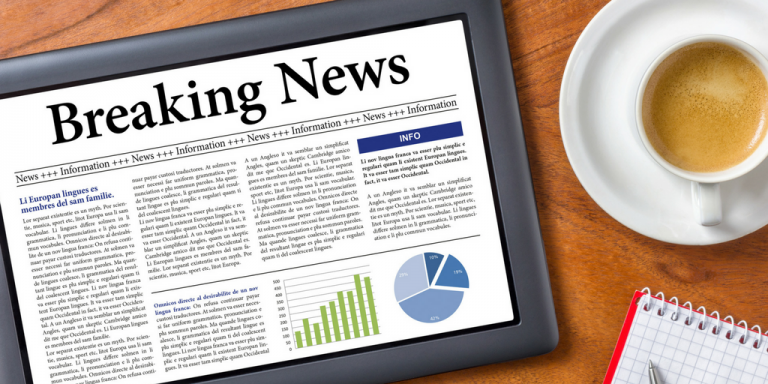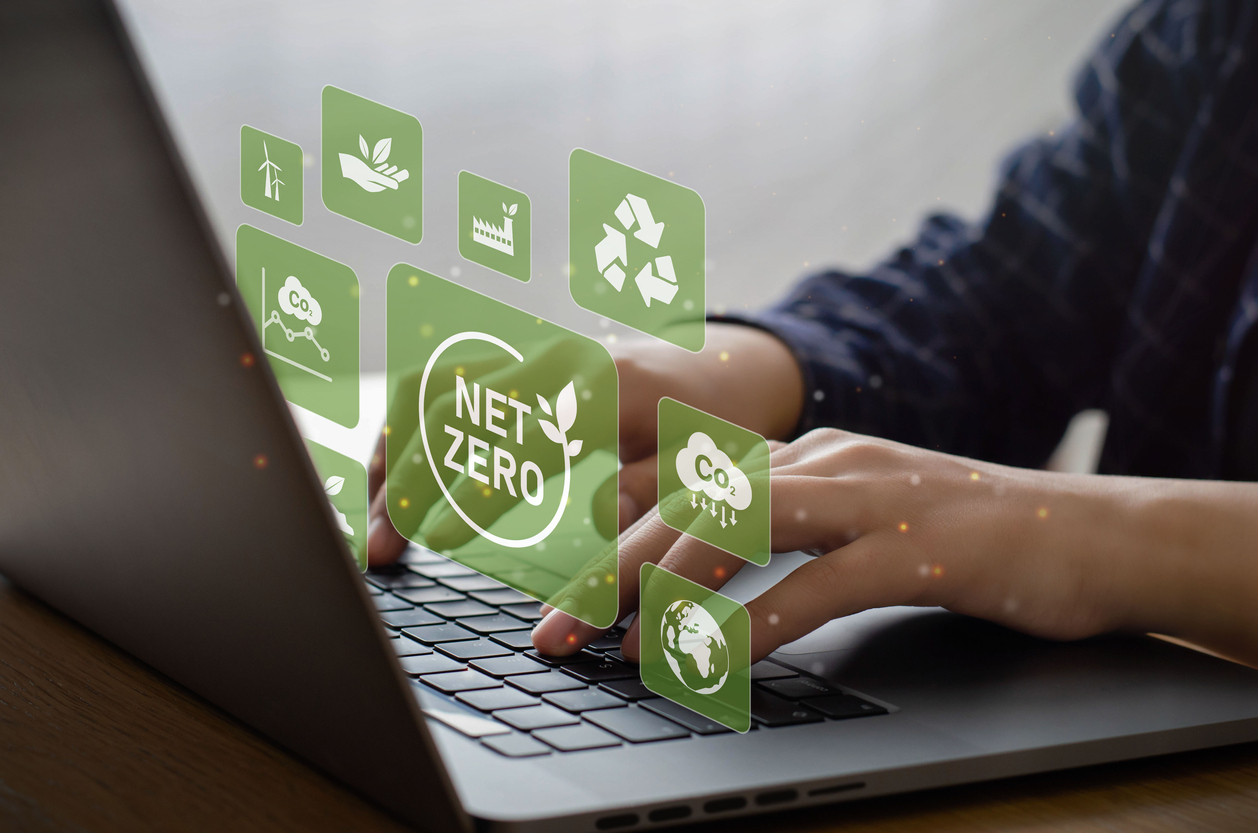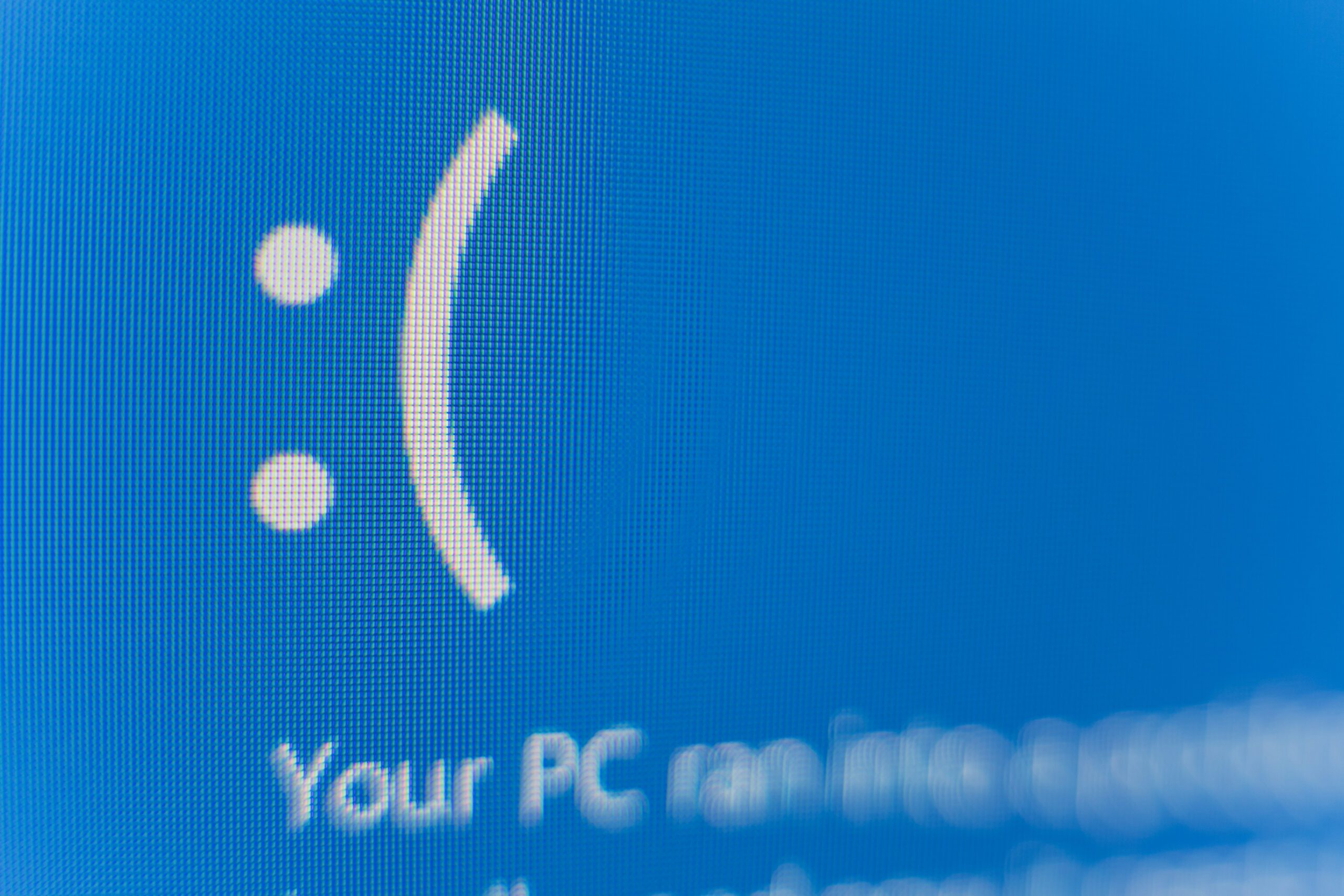
As the Israel-Hamas war has unfolded, stakeholders are re-evaluating companies based on their ties to the conflict.
PublicRelay examined how public opinion and media reporting on major brands has evolved since the start of the conflict. We found that ties to the Israeli government are a looming corporate reputational risk. And that threat is set to grow as Americans become increasingly sympathetic to the humanitarian crisis in Gaza.
There’s been a remarkable shift in public opinion in the last six months
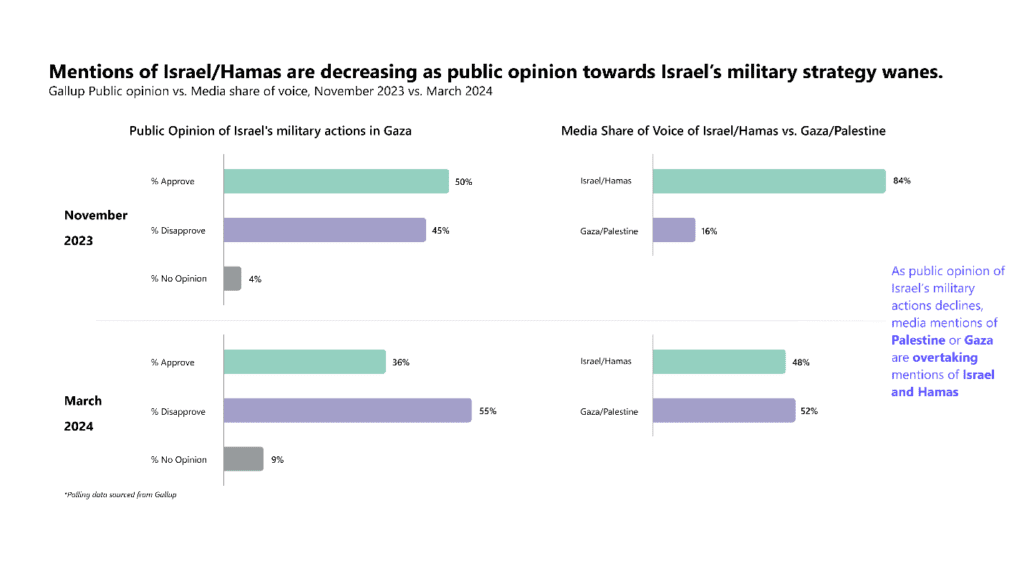
Polling data from Gallup reveals that early opinion towards Israel’s military strategy was in the country’s favor. At this point, Israel was still reeling from Hamas’ October 7th attacks.
The Israeli government’s reaction was at the center of news coverage in November. The media commended corporate leaders for backing Israeli citizens in need. This included Google’s Sundar Pichai and JPMorgan’s Jamie Dimon, who expressed steadfast support for the country.
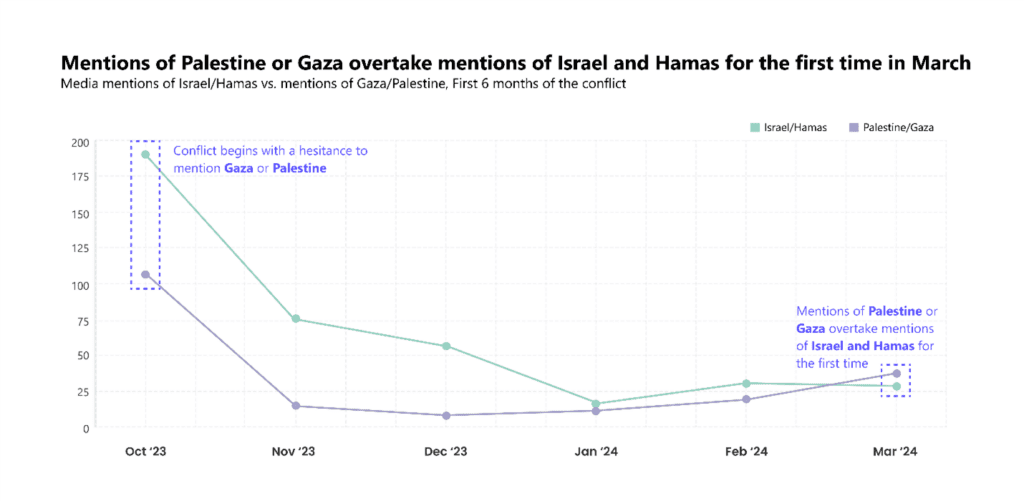
But as time marched on, Americans became more aware about the humanitarian crisis in Gaza. By March, public opinion had largely turned against the Israeli military strategy. Media reporting reflected this, as coverage of Palestine and Gaza overtook mentions of military conflict between Israel military and Hamas for the first time.
As the attention on Gaza has grown, so has the backlash on brands’ ties to the Israeli military. The mainstream media that once praised businesses for showing support now spotlight accusations of bias against Palestine.
Exposure to the conflict is both an external and internal communications issue
We found that some of the largest companies in the world have been unprepared to respond to consumer backlash. Both McDonalds and Coca-Cola have already reported declining sales linked directly to boycotts. This is especially a risk for companies with younger audiences, who have been the driving force behind protests.
But the consequences go beyond your customer base. Protests by activist employees have steered the media cycle in recent months. This creates an internal communications issue that could put all companies with ties to the Israeli government at risk.
Google, for example, has been traditionally known for their open work culture. In recent months, the company faced internal backlash over their Israeli military contracts. The tech giant has limited company message boards and fired protesters, acting out-of-line with their cultivated brand image. High profile outlets have called out Google’s ambiguous public statements on their actions. Their response has fueled a narrative of unpreparedness around internal dissent.
Plan your response today
As American opinion continues to turn against Israel’s military actions, it’s clear that organizations with ties to Israel’s military have unavoidable exposure to the public discourse. Smart leaders should assess their risk profile relative to their customer and employee bases and plan responses now. Communicators need to prepare targeted response strategies ahead of time to effectively address concerns from external and internal stakeholders alike.
To learn more about our research contact us here.
Related Resources
VIENNA, Va.–(BUSINESS WIRE)–PublicRelay, the leading communications analytics and insights firm, announced two new senior executive hires: Anu George as Chief Operating Officer and Ryan Smith as Senior Vice President of Insights. Both leaders bring a wealth of experience in scaling global analytical operations and driving strategic growth for the world’s leading brands and organizations.
Anu George joins PublicRelay following distinguished experience leading global operations, quality, and innovation functions at AIG, Morningstar, and GE. Anu excels at driving organizational success in the digital era. Anu has been instrumental in delivering value for customers, simplifying operations, and enhancing product and service quality. By leveraging digital technologies along with design thinking, process reengineering, and agile methodologies, Anu has built scalable operating models and cultivated customer-focused cultures of innovation. At PublicRelay, Anu will oversee global client analytics operations, spearhead operational and data excellence, and drive strategic growth initiatives.
Ryan Smith brings a wealth of communications insights expertise to PublicRelay. He was most recently a senior executive at FleishmanHillard, culminating as SVP & Senior Partner for TRUE Global Intelligence. In that role, he provided strategic counsel to many Fortune 100 clients, growing and defending their reputations. Ryan will lead PublicRelay’s Strategic Partnerships team, focusing on delivering a superior-quality customer experience through unmatched insights and actionable, data-driven recommendations.
“I am thrilled to welcome Anu and Ryan to our leadership team,” said Eric Koefoot, CEO and Co-Founder of PublicRelay. “Their proven track records and visionary leadership will be instrumental in accelerating our growth and enhancing our position as the most trusted partner for communications analytics, insights, and advice to the world’s leading brands. With their expertise we will leverage our cutting-edge AI capabilities to expand our offerings and deliver unparalleled value to our clients.”
Anu George remarked, “I am excited to join PublicRelay and apply the latest technologies to drive superior quality, foster innovation, and deliver a powerful, high-value experience to clients.”
Ryan Smith added, “Analytics and insights are always behind the most effective communications strategy and actions, and PublicRelay is the leading expert in delivering this to the world’s smartest brands. To be part of this team to innovate quickly and really deliver value to clients in all-new ways is truly exciting.”
About PublicRelay
PublicRelay is the unmatched choice for Fortune 500 companies, government agencies, and non-profits seeking accurate, actionable insights into their communications efforts. Combining cutting-edge technology and AI with human analysis, PublicRelay delivers data and insights that show communications’ impact on business goals, predict risks, trends, and outcomes, and guide smart communications strategy. Known for exceptional partnerships with clients, PublicRelay delivers communications analytics and insights that leading communications executives need to compete in today’s complex marketplace.


Related Resources
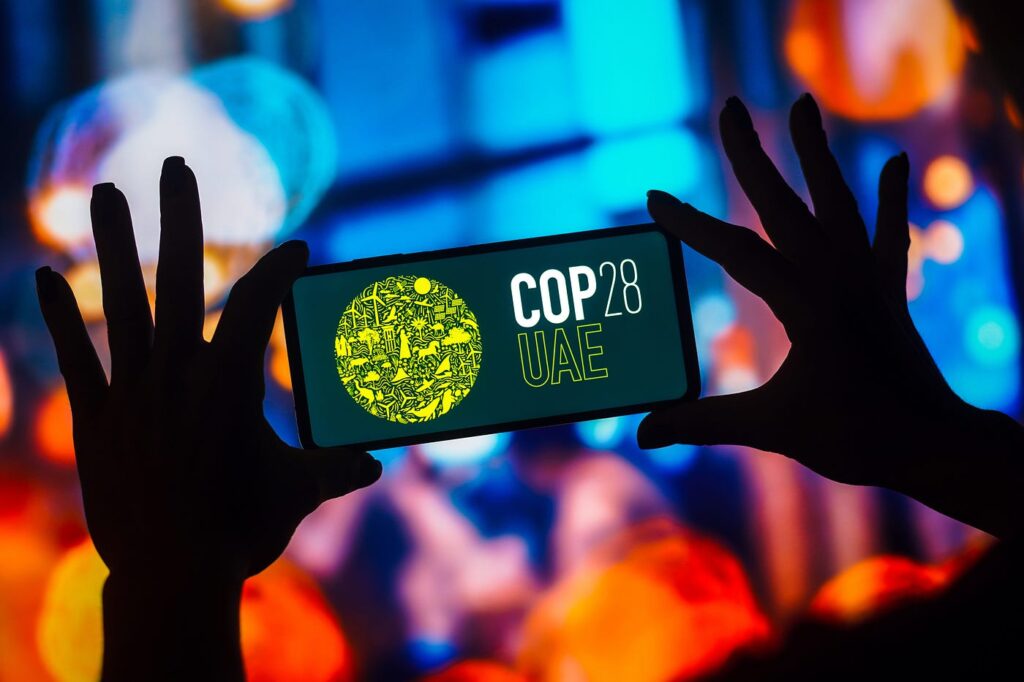

The COP28 Climate Change conference in Dubai is rapidly approaching and already making headlines. The media buzz is especially focused on the energy sector, who will now have a seat at the UN negotiating table.
Energy companies have opportunities to proactively shape their media reputation ahead of the conference. But that attention may bring new challenges and risks. So it’s important for energy communicators to be prepared for potential criticisms they may face.
To surface these risks, PublicRelay examined the media landscape for energy companies ahead of COP28. We drew on a sample of top stories in September and October 2023 about the conference.
Here are five PR risks energy communicators must prepare for ahead of COP28:
1. Watch out for concerns about competing interests
Climate advocates are skeptical of oil & gas’s involvement in COP28. Al Gore recently slammed the conference’s appointment of Sultan al-Jaber, the CEO of the Abu Dhabi National Oil Company, as COP28 president.
Wider oil & gas involvement may fuel fears that the sector is attempting to capture and obstruct global climate progress. That was the most prevalent and wide-reaching concern in the media. Some activists went so far as to demand boycotts of the conference.
2. Anticipate scrutiny about the scope of climate pledges
Companies like Shell and TotalEnergies have rallied around a Global Decarbonization Alliance in the oil & gas sector. Championed by the COP28 president, this alliance commits reducing emissions from oil extraction. It also aims to reduce methane emissions and oil leaks.
Energy companies should expect criticism about the scope of those commitments. Critics highlight that they miss scope 2 and 3 emissions where the energy sector’s impact is greatest.
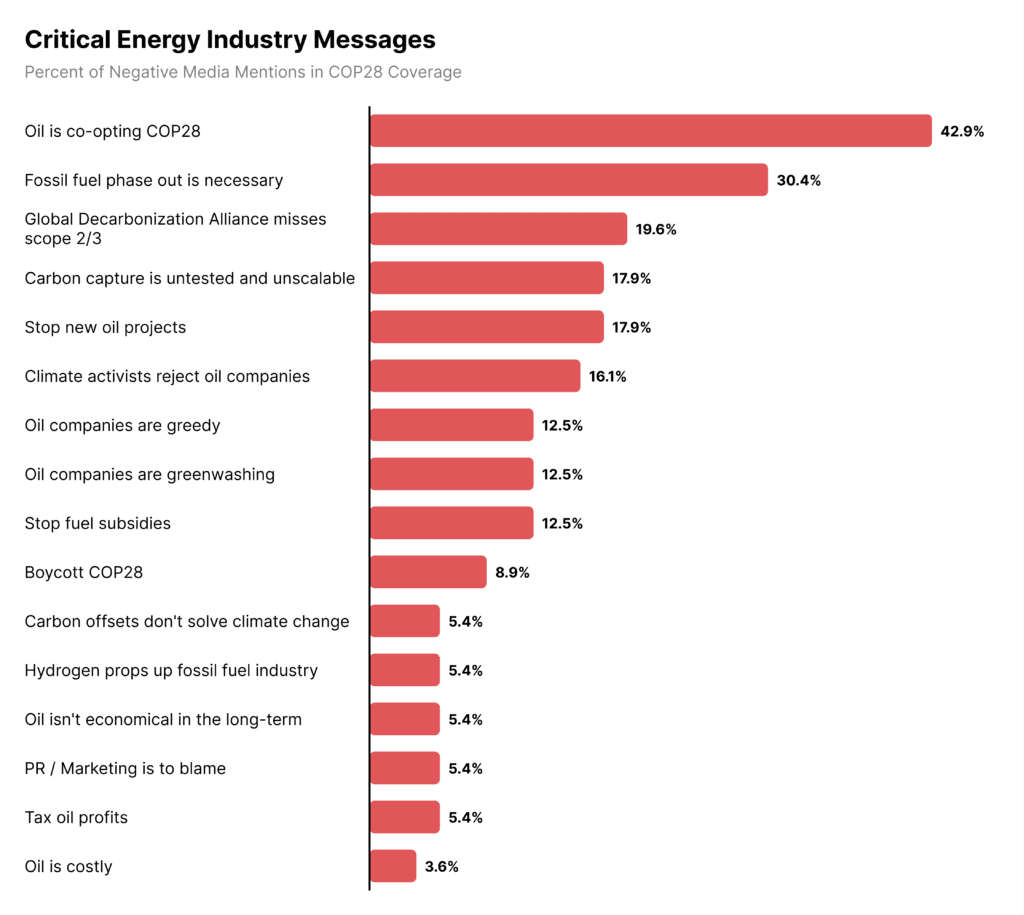

3. Be ready to defend future energy solutions
Climate advocates will likely be skeptical of new investments in new energy solutions. These range from carbon capture technologies to development of hydrogen fuel.
Some claim that carbon capture approaches are untested and unscalable. Some call out hydrogen development as simply re-entrenching reliance on fossil fuel.
4. Expect demands for financial commitments
Climate finance will be among the leading topics at COP28. Climate leaders are hoping to mobilize capital toward new climate-friendly infrastructure.
But some policymakers are also calling for prices on carbon, windfall taxes on energy profits, and a rollback of fuel subsidies worldwide. Energy companies may even be expected to arrive at COP28 with innovative approaches to carbon credits and pricing.
5. Manage perceptions from climate academics
Environmental activists are the biggest critics of energy companies. They speak loud and often.
Yet climate academics may be a bigger PR risk. They don’t criticize energy companies regularly. But when they do they receive higher engagement on average. Academics may be seen as more objective and credible to a wider audience.
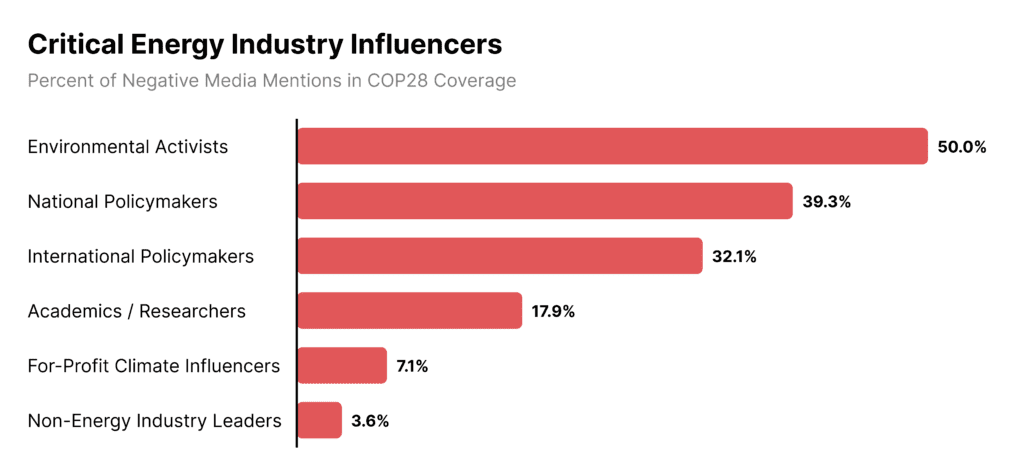

PR is in the spotlight
The stakes are high for energy communicators. Climate leaders will watch energy companies closely. Climate advocates may be quick to label the energy sector’s involvement in COP28 as nothing more than a greenwashing stunt.
Energy communicators must emphasize their genuine commitment to climate solutions. Make clear that oil & gas pledges may just be a first step in a larger green transition. Be prepared to showcase tangible investments in new and viable energy solutions. Offer support to innovative financing arrangements to position yourself as a forward-looking business.
Platforming third-party support is also necessary. Engage credible experts that can objectively support the energy sector’s efforts. Play up support from climate leaders like US climate envoy John Kerry and the Environmental Defense Fund’s Amanda Leland. Those influencers may be more hopeful that energy’s presence at COP28 can move climate progress forward.
Related Resources
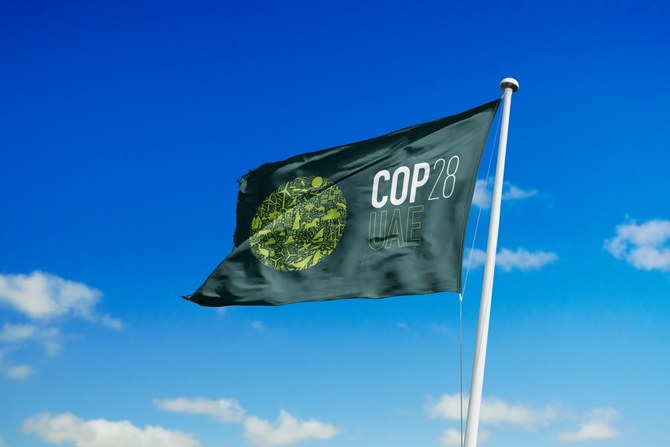

This year’s COP28 Climate Change Conference in Dubai is going to make headlines. Unlike prior years, global energy companies will have a seat at the negotiating table. With no less than the future of UN climate change policy up for debate, the stakes are high for energy communicators.
The energy sector’s involvement at the conference presents reputational challenges and opportunities. So it’s crucial for energy communicators to proactively shape their media reputation.
PublicRelay sought to understand the media landscape for energy companies ahead of COP28. We analyzed a sample of top stories in September and October 2023 about the conference. We also focused on the media’s coverage of major energy companies around COP28.
Here are five PR strategies for energy communicators ahead of COP28:
1. Seize the Spotlight on Energy Solutions
The COP28 news cycle will undoubtedly revolve around energy solutions. Energy-focused articles were most prevalent and mostly positive. They also had among the highest reach and social engagement.
Emphasize your company’s innovations in new energy areas. Positive energy stories focused on the development of renewables like solar and wind. They also discussed the growth of new technologies like carbon capture and hydrogen.
2. Embrace Climate Finance
While energy solutions led the media conversation, climate finance generated just as much social engagement.
Position your company as a leader in financing the transition to a greener future. Highlight investments in new energy solutions. Play up support for innovative approaches to carbon credits and taxation. This will reinforce your image as a forward-thinking business.
3. Capitalize on the Intersection of Climate and Global Health
Global health is an emerging topic in the climate conversation. It didn’t appear often in the COP28 news cycle, but coverage was entirely positive and widely amplified.
Showcase your contributions to global health through environmentally sustainable practices and products. This approach will likely be well received. It may also garner high syndication and sharing.
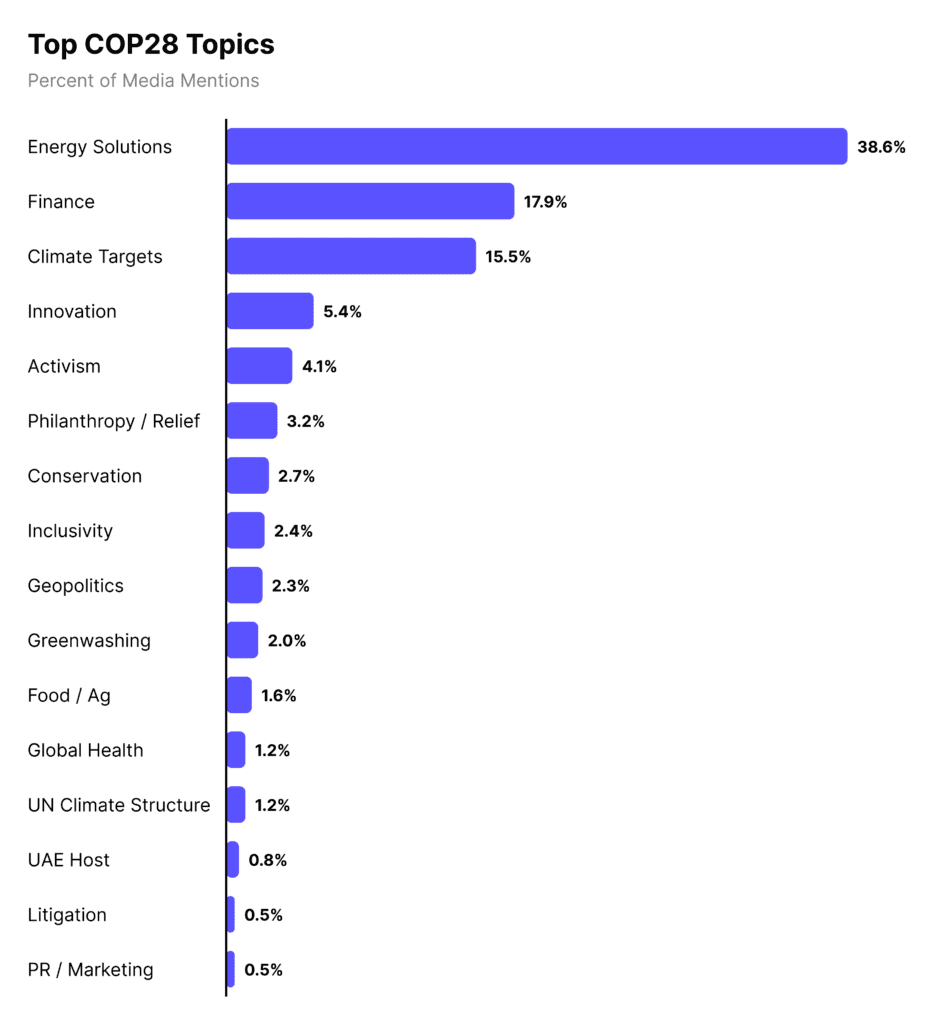

4. Support Oil & Gas’s Climate Commitments
Oil companies involved in COP28 have an opportunity to take on a greater role in climate action. Early media signals of the oil & gas sector’s climate commitments were positive.
Third-party climate influencers called for energy companies to lead on climate change. Some were optimistic about initiatives like the Global Decarbonization Alliance championed by COP28 president Sultan al-Jaber.
5. Frame your Climate Action as a Transition
Position energy decarbonization as a crucial first step in a just energy transition. Global demand for energy is increasing. But tangible actions by the energy sector can help mitigate the effect of emissions.
Sector-wide initiatives that were viewed positively included reducing methane from oil extraction. Preventing oil flares and leaks also had positive pick-up. These messages may resonate with the public. They can reinforce the sector’s role in meeting global energy demand responsibly.
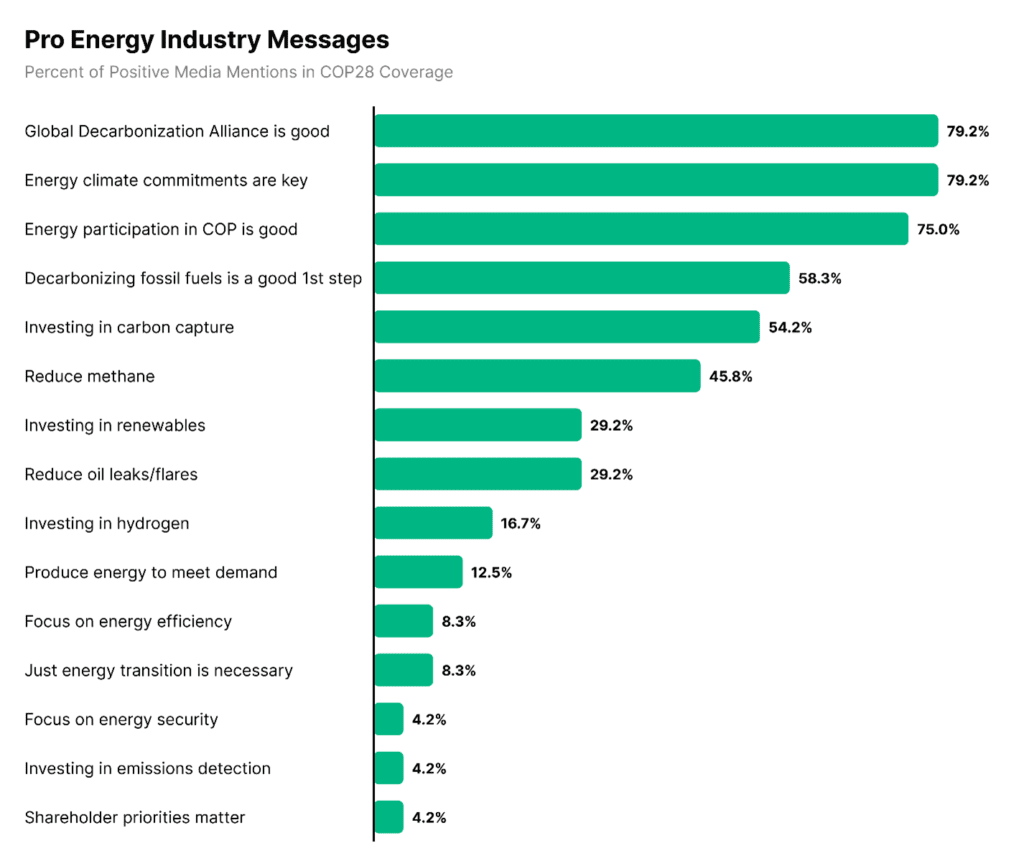

Managing Risks
Remember that addressing media scrutiny is important. Communicators should prepare to transparently respond to criticism at COP28. Expect accusations of energy companies co-opting global climate negotiations. Have a strategy to manage potential activist calls for boycotts of the conference.
Furthermore, acknowledge the scope of your emission reductions strategy. That’s especially when it comes to scope 2 and 3 emissions. Be ready to engage with politicians’ calls for taxes on energy profits. Highlight your commitments to invest in clean energy innovation worldwide.
COP28 is an opportunity for energy companies to reposition themselves as leaders in the global transition to a sustainable energy future.
Energy communicators must capitalize on emerging positive narratives and address challenges head-on. This can help their companies shine at COP28 and beyond.


